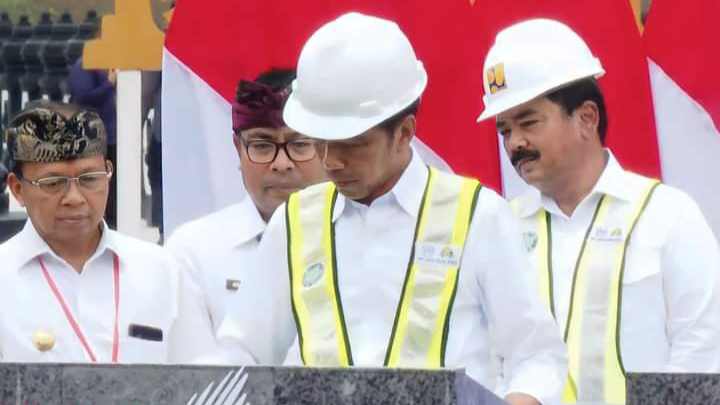Bendungan Danu Kerthi Buleleng Yang Dibangun Hampir Lima Tahun Diresmikan Presiden Joko Widodo

BULELENG, MataKompas.com | Presiden Joko Widodo didampingi Menteri Pekerjaan Umum dan Perumahan Rakyat Basuki Hadimjono, Menteri Agraria dan Tata Ruang Marsekal Hadi Tjahjanto, dan Gubernur Bali I Wayan Koster meresmikan Bendungan Tamblang (Danu Kerthi), Kamis (2/2/23).
Bendungan Tamblang (Danu Kerthi) di Kabupaten Buleleng ini dibangun sejak tahun 2018.

Nama Danu Kerthi itu sendiri diusulkan oleh Gubernur Koster sebagai nama pengganti Bendungan Tamblang.
Peresmian bendungan tersebut ditandai dengan membunyikan sirene yang ditekan oleh Presiden Joko Widodo. Usai menekan sirine, kegiatan dilanjutkan dengan penandatanganan prasasti Bendungan Danu Kerthi.

Dalam peresmian tersebut juga hadir Penjabat Bupati Buleleng Ketut Lihadnyana beserta jajaran perangkat daerah terkait.
Usai peresmian bendungan Danu Kerthi di Kabupaten Buleleng, rencananya Presiden Joko Widodo akan melanjutkan kunjunganya ke Kabupaten Jembrana, meninjau pasar Umum Melaya, Sentra Tenun di Kota Negara dan beristirahat sejenak di Anjungan Cerdas Rambut Siwi.(Red/Ags).





